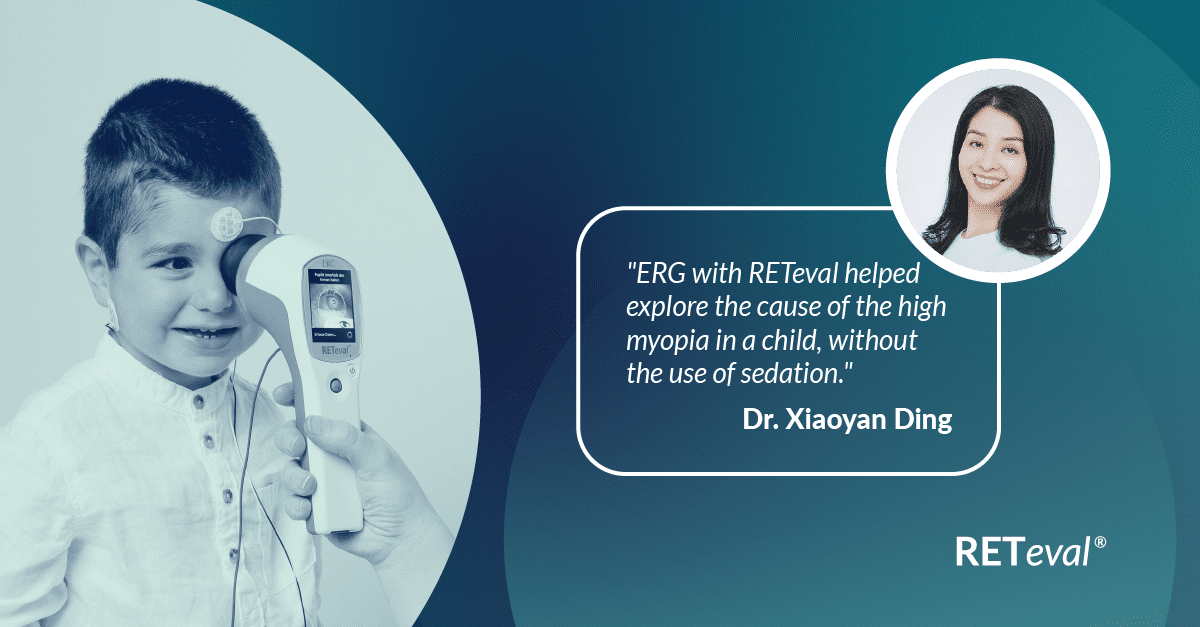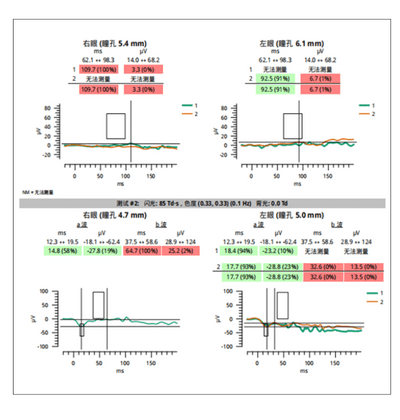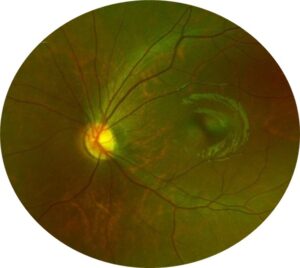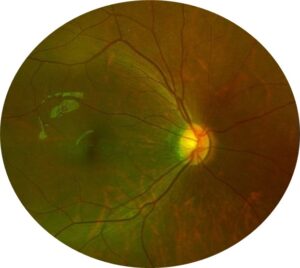Estudo de Caso
ERG Supports Diagnostic Accuracy in a Pediatric Patient
by Dr. Xiaoyan Ding, Sun Yat Sen University, China
In pediatric ophthalmology, diagnosing eye disease is often complex due to patients’ inability to communicate or comply with exam procedures, which are most often designed for use in adult populations. This case study involving a 3-year-old boy with bilateral high myopia (-6.25D and -7.00D), normal structural results, and no extraocular features demonstrates how the RETeval ERG device addresses these challenges.

Por que o exame ERG foi realizado?
We needed to determine whether the patient had “normal” versus pathologic myopia and whether there were additional underlying problems.

Quais foram as descobertas do ERG?
The dark-adapted ERG showed significant abnormalities. This guided us to the conclusion that the patient most likely has inherited retinal disease. Upon further review of the test results, we noticed an electronegative waveform in the second dark-adapted test step. Electronegative waveform means the a-wave is preserved, but the b-wave is missing. This is a typical representation of Congenital Stationary Night Blindness.
How did the ERG influence the patient’s care?
The ERG findings allowed us to counsel the family about genetic testing and advise them to attend low vision care and regular ophthalmologic assessments. In the absence of a correct diagnosis, this child would likely not receive the necessary care, which could lead to further clinical challenges as well as difficulties in school. ERG with RETeval helped explore the cause of the high myopia in a child, without the use of sedation.
Conclusão
This case highlights the importance of adding ERG testing in the diagnostic process. A correct diagnosis helped prevent misguided treatments, while prompting the initiation of necessary services, such as low vision programs. With appropriate counseling the patient will be better equipped to navigate the road to adulthood.
See the patient’s test results

Fluorescein Angiography

Fundus imaging: right eye color

Fundus imaging: left eye color

OCT left hand side

OCT right hand side

Dr. Xiaoyan Ding
Sun Yat Sen University, China
Dr. Ding is an esteemed retinal specialist with a particular focus on pediatric retina. She earned her MD and PhD from Sun Yat-sen University in 2006 and conducted post-doctoral research at the National Eye Institute (NEI) in 2007. She served as the director of the Children’s Center at ZOC during 2018-2023 and currently is the director, retinal service at the same location. Her extensive experience encompasses clinical studies in pediatric diseases. With a decade of clinical practice in pediatric retina, Dr. Ding established the pediatric early-onset high myopia registry, successfully enrolling over 800 highly myopic children. Her research delved into the etiology, genetic and developmental abnormalities, and clinical characteristics of high myopia in children, along with phenotype and genotype correlation analyses.
Dr. Xiaoyan Ding has a prolific publication record, with over 200 peer-reviewed manuscripts. Her innovative contributions have resulted in 8 granted patents and 2 provisional patents. She has played an active role in shaping the field of ophthalmology by contributing to the development of several critical guidelines and expert consensus documents, including Guidelines for the Diagnosis and Treatment of Retinoblastoma in China (2019),Clinical Multifocal Electroretinogram Standards (2020),Expert Consensus on Intravitreal anti-VEGF for Retinopathy of Prematurity (2021),and Expert Consensus on the Diagnosis and Treatment of Retinopathy of Prematurity (2023).



